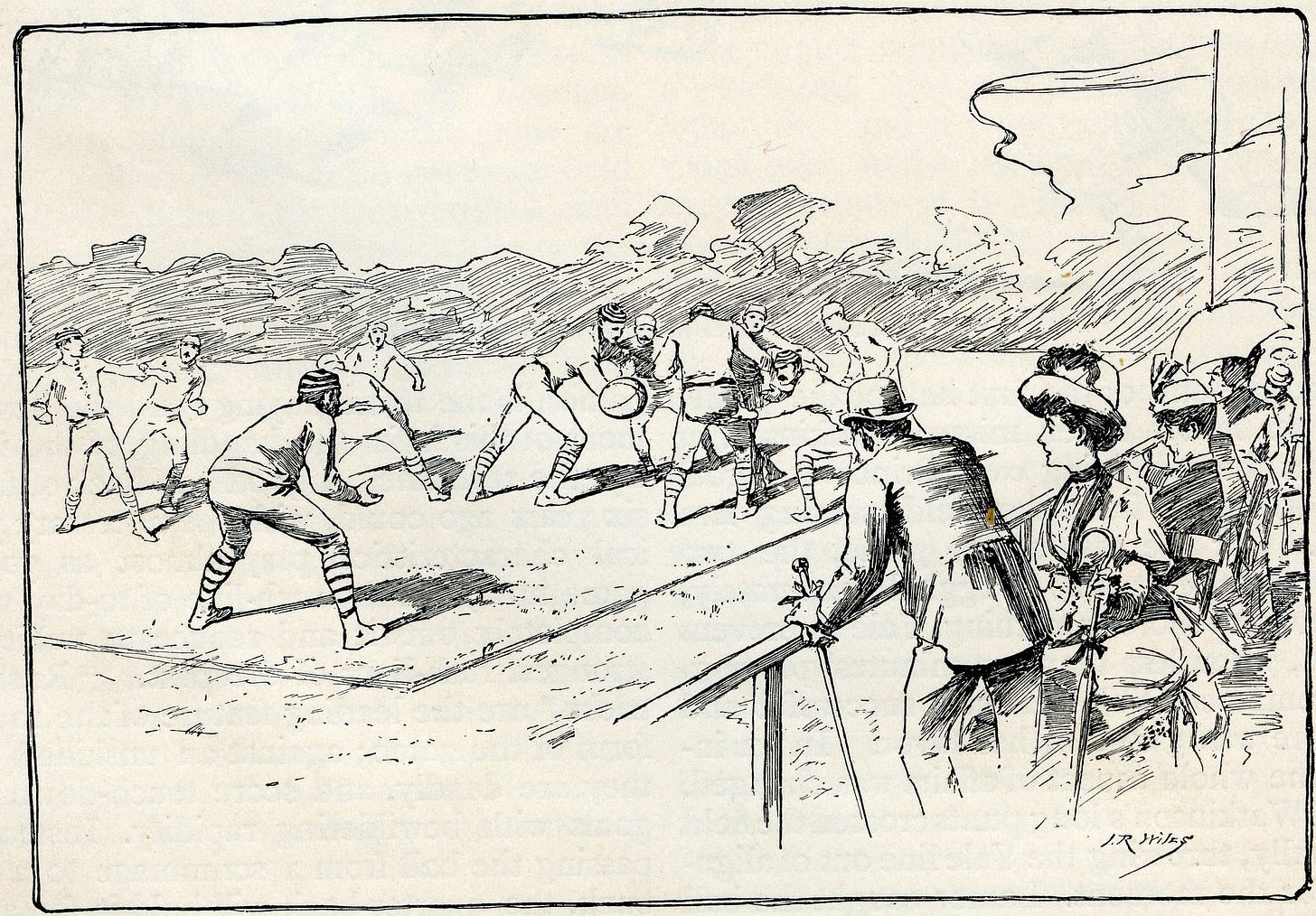Today's Tidbit... Bringing the Ball into Play from Out of Bounds
Before 1894, teams had five options when bringing the ball back into play from out of bounds. The first option was a "fair," which involved throwing the ball onto the field at a right angle from the sideline and between the two teams lined up across from one another. (The fair or "line out" remains part of rugby today.)
The second method (shown in the illustration) was to throw the ball back to a teammate who then ran or punted the ball. Third, the player putting the ball in play could enter the field of play himself and run or lateral the ball. Football’s rule-makers eliminated these three options in 1894.
The fourth option, an uncontested punt from out of bounds, was eliminated in 1904, leaving only the fifth option. The fifth option allowed the player to walk onto the field and place the ball down five to fifteen yards from the sideline (after first announcing how far from the sideline he planned to walk the ball). The offensive team then ran a play from scrimmage at the spot the ball had been placed. Of course, that process went away with the introduction of hash marks in 1933.
Football Archaeology is reader-supported. Click here to buy one of my books or otherwise support the site.


